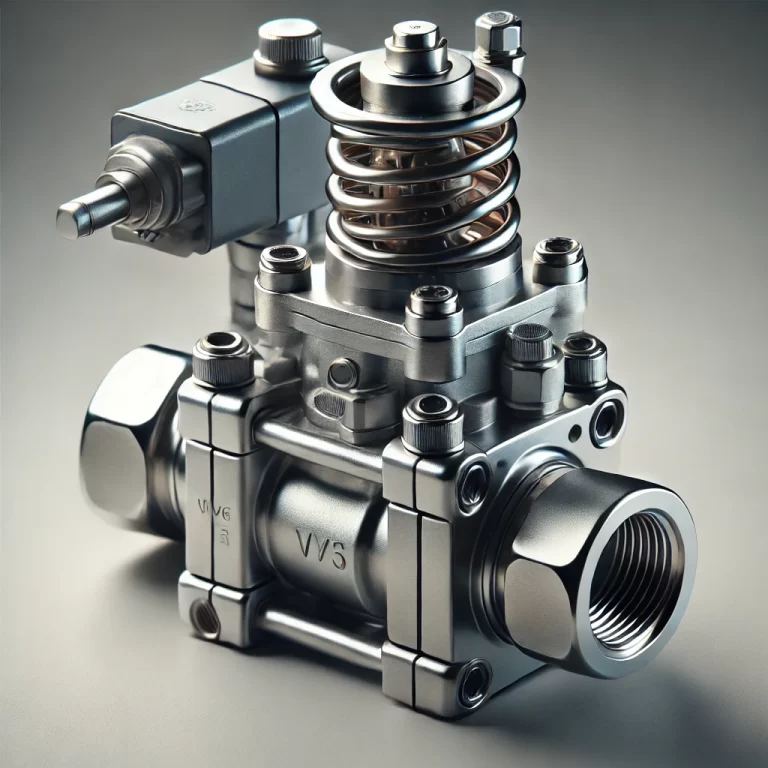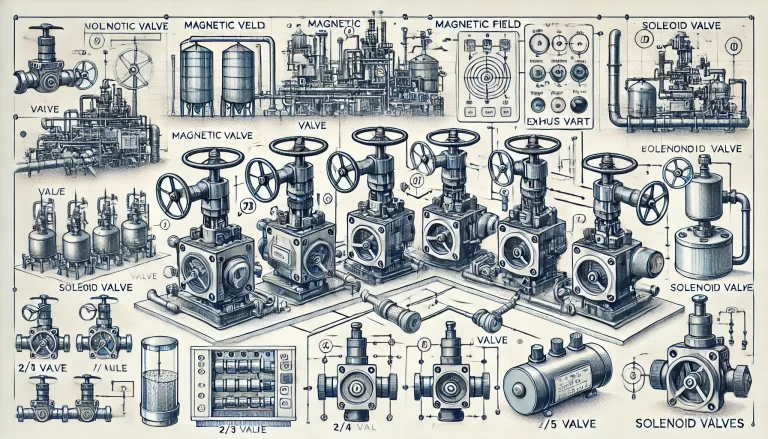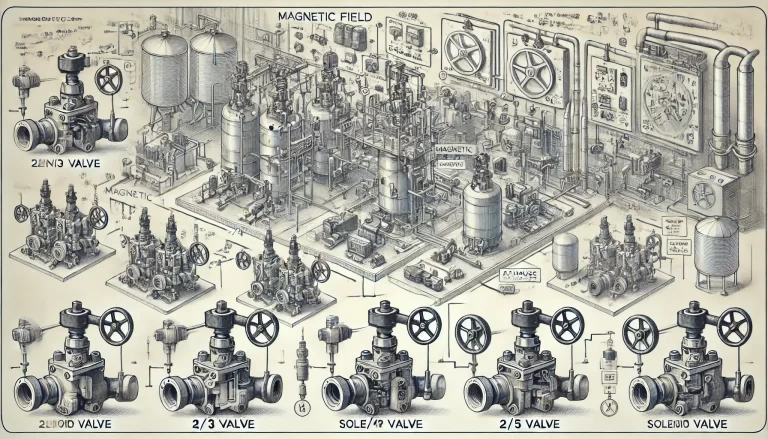Solenoid valves are essential components in many industrial systems, including chemical plants. These valves are controlled by electric current, which powers a coil (known as a solenoid) to generate a magnetic field. This magnetic field moves a plunger that opens or closes the valve, controlling the flow of liquids or gases. In chemical plants, solenoid valves play a crucial role in automating pneumatic actuator operations, determining whether a valve body opens or closes.
In this article, we’ll explore different types of solenoid valves, their working principles, application scenarios, and the critical factors to consider when selecting one for your chemical plant.

Common Types of Solenoid Valves
1. Two-Way, Three-Port Solenoid Valve (2/3 Valve)
Working Principle: This valve has two working positions and three ports. It enables switching between supply and exhaust functions. Typically, one port connects to the air source, another to the actuator, and the third serves as an exhaust port.
Applications: This type of valve is commonly used for controlling single-acting cylinders. For example, in simple pneumatic clamping devices, a 2/3 solenoid valve can control the cylinder to extend and clamp or retract and release.
2. Two-Way, Four-Port Solenoid Valve (2/4 Valve)
Working Principle: This valve features two working positions and four ports. It allows control over the direction of airflow, enabling an actuator to move in either a forward or reverse direction.
Applications: Widely used in double-acting cylinder control, the 2/4 solenoid valve is integral to sequential control systems in chemical plants. For example, in processes like PDH (Propane Dehydrogenation) unit operation, it may control the sequencing of track ball valves in a dryer.
3. Two-Way, Five-Port Solenoid Valve (2/5 Valve)
Working Principle: This valve has two working positions and five ports. It is designed to enhance control precision and speed in double-acting cylinders, featuring two exhaust ports to facilitate rapid air release.
Applications: Suitable for scenarios where precision and speed are critical, such as in high-speed packaging machinery. The 2/5 solenoid valve ensures cylinders can complete rapid and accurate motions.

Key Factors to Consider When Selecting a Solenoid Valve
Choosing the right solenoid valve for a chemical plant involves considering the following factors:
Control Object:
For single-acting actuators, a 2/3 solenoid valve is typically sufficient.
For double-acting actuators, consider 2/4 or 2/5 valves based on your precision and speed requirements.
Power Consumption:
Chemical plants often prioritize low-power solenoid valves with power ratings below 4W to minimize energy costs and heat generation.
Environmental Conditions:
Ensure the valve is compatible with the operating environment. For example, if corrosive gases are present, select a valve made from corrosion-resistant materials like stainless steel or PTFE.
If the environment requires explosion protection, opt for explosion-proof models such as ExdⅡBT4 or ExdⅡCT6.
Response Time:
High-speed operations require valves with fast response times. Evaluate the speed and precision requirements of your application to determine the appropriate type.
Operating Pressure and Flow Rate:
Check the valve’s specifications for operating pressure and flow rate to ensure compatibility with your system’s requirements.
Safety and Certification:
For chemical plants, safety is paramount. Ensure the selected valve complies with industry standards and certifications relevant to hazardous environments.

Conclusion
Selecting the right solenoid valve is a critical step in ensuring the safe and efficient operation of chemical plant systems. By understanding the working principles and applications of different valve types—2/3, 2/4, and 2/5—and considering factors such as control objects, environmental conditions, and operational requirements, you can make an informed choice.
A carefully chosen solenoid valve not only enhances system performance but also contributes to the overall safety and reliability of your operations. Incorporate these guidelines into your decision-making process to achieve optimal results.
